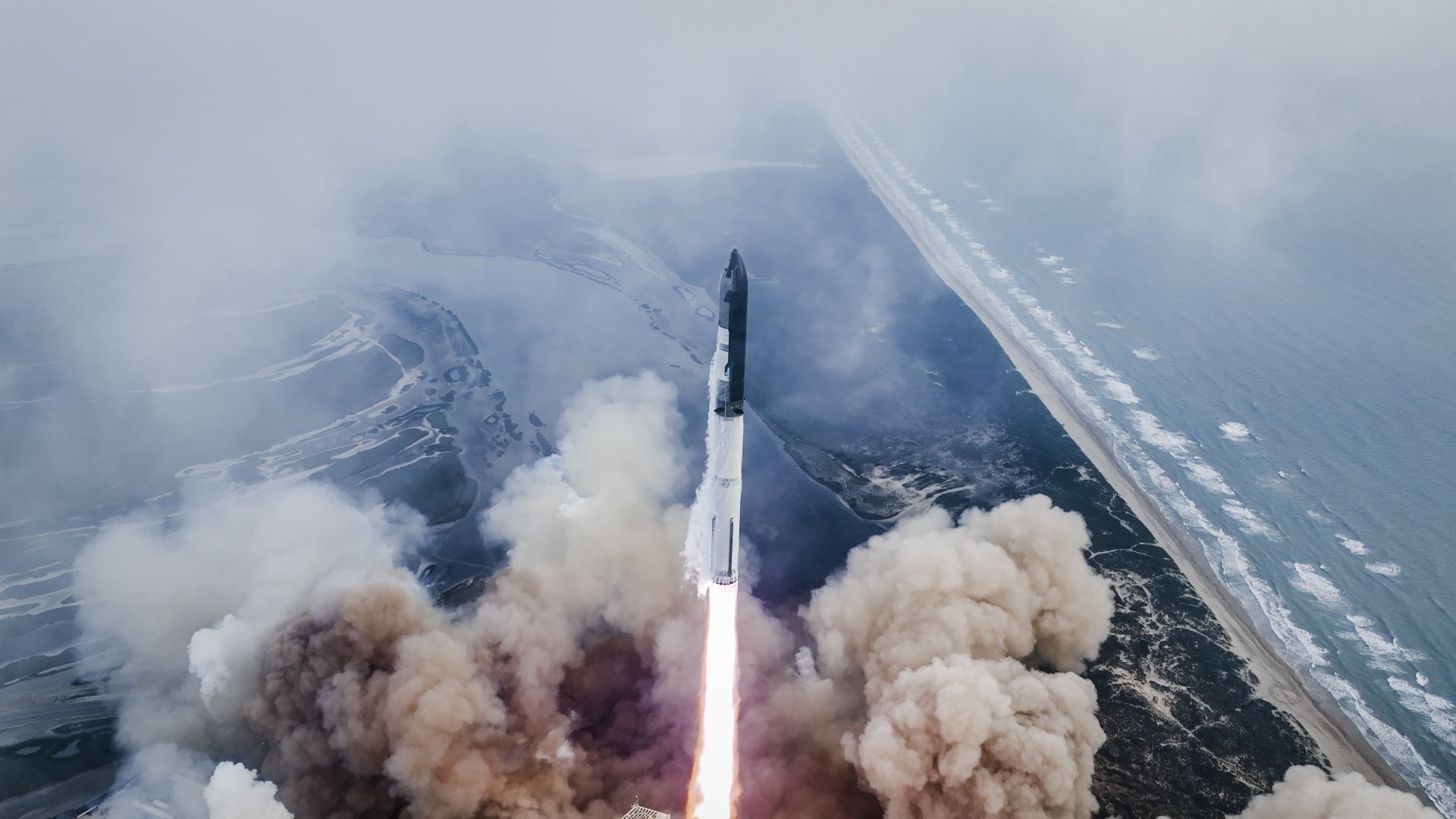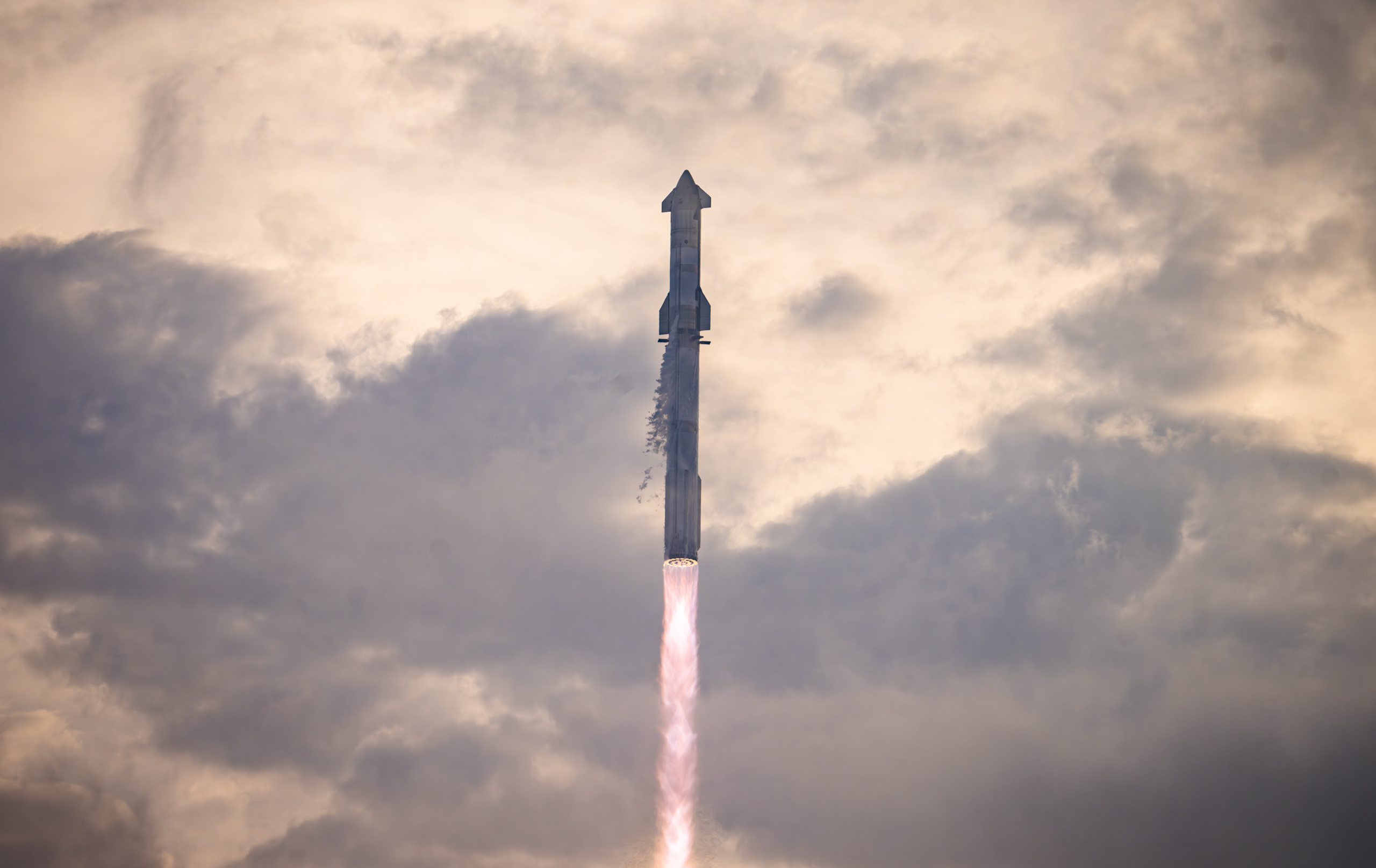
Today’s third test flight of SpaceX’s super-heavy Starship RH (mission IFT-3) ended with a partial success (more than the previous ones) – in fact, the team managed to “go further than ever”. The launch was live streamed on SpaceX’s X/Twitter account.
Starship’s third test flight. How was it?
The biggest achievement of this test flight is that the prototype Starship (S28) entered the required Earth orbit for the first time, and then successfully descended from it, although it did not manage to land gently in the ocean. Given the results of today’s test, SpaceX engineers have made quite a few changes to the design (“thousands of changes,” if Elon Musk is to be believed) based on the results of the investigation into the explosive second attempt of IFT-2, when both stages after fission were blown up due to a clogged filter and a liquid oxygen leak. The first Starship orbital flight attempt in April 2023 ended in a controlled detonation after the stages failed to separate.


This time, the entire flight of the Starship lasted about 50 minutes (versus a little more than 8 minutes of the previous test). It took place according to a slightly updated plan, taking into account the goals of the mission.
Starship in full configuration with Super Heavy (the height of the entire system exceeds 120 meters) launched from the site at Starbase in Boca Chica, Texas, at 15:25 Kyiv time on March 14, 2024. By the way, this is already the second consecutive successful start without delays or postponements.
Start
The first stage worked perfectly until the final stage of watering. At approximately 2:49 after liftoff, the Super Heavy Starship launch vehicle with all 33 booster engines (fired all the time, none failed) reached an altitude of 72 km, where a successful hot separation took place: most of the Super Heavy B10 booster engines shut down. and at the same time the engines of the S28 ship started working.
Hot uncoupling of stairs
This is the second time that the Starship team has managed to demonstrate a hot ladder layout. The first stage successfully performed the Boostback Burn reversal maneuver (Falcon 9/Falcon Heavy stages also return) and entered the landing trajectory, but in the last meters before dropping into the ocean, the team lost contact with the booster. Previously, all the engines at this stage did not work as planned, so the booster was not able to brake enough for a soft landing in the water in the Gulf of Mexico.
Drifting in space and testing the door
As for Starship, after separation from the accelerator, it turned on all 6 engines and continued to climb along the planned trajectory – it reached an altitude of about 150 km, successfully entered Earth orbit with an apogee of about 235 km, and turned off the engines. Next, the cosmonaut carried out successful tests of the mechanism for opening and closing the doors of the payload compartment (in the video below) and pumping cryogenic fuel from the small tank to the main one. After that (about 40 minutes after the start), the procedure for re-entry into the atmosphere began. And here the problems began: the ignition of the vacuum Raptors, which was supposed to be the first demonstration of their work, did not take place (the on-board computer for some reason did not execute the command).
In the end, the Starship re-entered the atmosphere without breaking the integrity of the structure, maneuvering purely with side rudders. In the video of the broadcast, you can see how small fragments fly away from the ship during entry into the upper atmospheric layers. A lot of heat-shielding tiles also fell off. At an altitude of about 65 km and a speed of 7.14 km/sec, communication with the ship was lost. Most likely, the autonomous safety system, after detecting deviations from the planned parameters, activated the emergency abort system, which destroyed the ship somewhere over the Indian Ocean.
Finally, it remains to add that during this launch, the SpaceX team also tested the operation of the Starlink cameras and stable communication, giving us many angles and incredibly beautiful footage from the Starship. What is worth just a few seconds of video with the plasma enveloping the cosmolite during its entry into the atmosphere.
Return to atmosphere
What’s next
SpaceX has repeated several times that the main purpose of this test (as, in principle, any other) is to collect important data for continued development. Therefore, the team will need some time to analyze in detail all the collected data and find out where adjustments need to be made so that at least one of the stages makes a soft landing next time. We hope that this time the investigation will take less time and SpaceX will quickly receive a license from the regulator for the next test – it has already configured enough boosters and ships.
Hopefully, at least 6 more flights this year
— Elon Musk (@elonmusk) March 12, 2024
SpaceX previously asked the FAA regulator for permission to conduct at least 9 Starship test launches before the end of the year. Meanwhile, Elon Musk, speaking to Ars Technica space editor Eric Berger, expressed hope for at least 6 more Starship launches this year. Therefore, it is quite possible to launch Starship V2 already this year.
Broadcast recording
Watch Starship’s third flight test →
— SpaceX (@SpaceX) March 14, 2024
The competition of ITS authors is ongoing. Write an article about game development, gaming and gaming devices and win a professional Logitech G923 Racing Wheel or one of the low-profile Logitech G815 LIGHTSYNC RGB Mechanical Gaming Keyboard!




